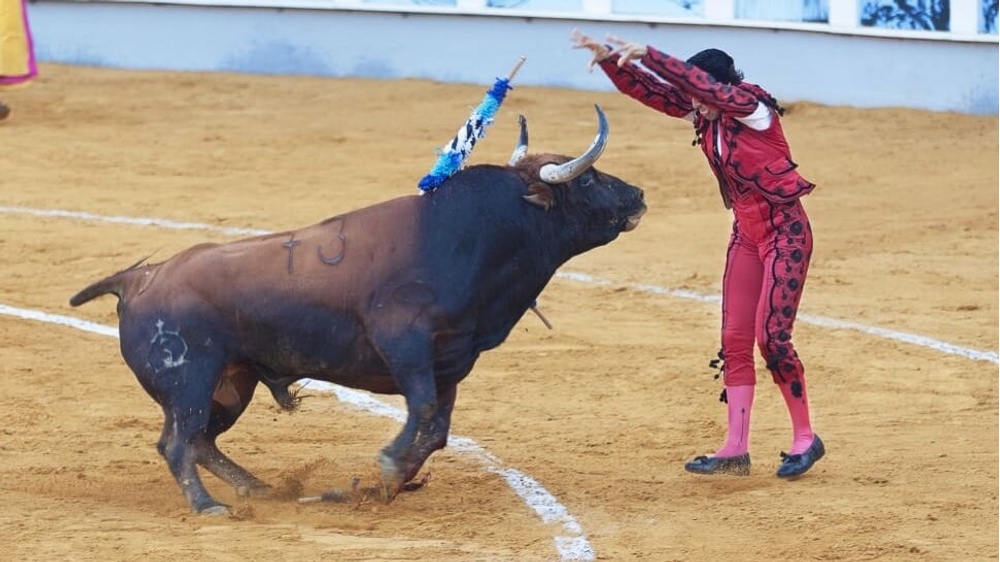Bogota, the capital of Colombia, is moving towards a ban on bullfighting.
The city council has backed a draft law that would outlaw the torture of bulls.
Andrea Padilla—a Green Alliance Party council member and the bill’s promoter—told reporters the bill would make it illegal to “lacerate, cut, maim, injure, burn or hurt animals in any form whatsoever.”
It would also limit bullfighting events at the Santamaria Bullring, which is run by Bogota’s city hall, to three bullfights per year.
The power to enact an outright ban on bullfighting resides with the Colombia legislature. However, the city council hopes the restrictions will eventually put an end to bullfighting once and for all.

Bogota’s History of Bullfighting
This isn’t the city’s first attempt to end the bloodsport.
Former Bogota mayor Gustavo Petro banned bullfighting in 2012. However, Colombia’s constitutional court lifted the ban and bullfights resumed in 2017. The court claimed bullfighting was “an artistic expression,” according to Colombia Reports.
Bullfighting first began in the city in 1931. The premise of the “sport” is that a picador, who rides on horseback, a banderillero, and a matador work together to entice a bull into an attack.
During the spectacle, the picador drives a lance, a type of pole weapon, into a bull’s back and neck muscles. The picador then gouges and twists the lance into the animal so that it bleeds out.
Then, the banderillero enters the ring. He plunges banderillas, colored sticks with sharp ends, into the bull’s back. After provoking the bull, the matador attempts to sever the bull’s aorta using his sword. If the bull does not die, the matador uses a dagger to cut the animal’s spinal cord. Once it is dead, the bull’s body is dragged out of the ring and sent to a slaughterhouse to be processed for meat.

Bullfighting and Animal Cruelty
Bullfighting is illegal in most countries. However, there are still a number of countries around the world where it is still legal, including Spain and Portugal.
While these countries consider bullfighting tradition and a symbol of culture, animal rights activists and organizations have called for an end to the sport due to animal cruelty.
According to the animal rights group People for the Ethical Treatment of Animals (PETA), thousands of bulls are killed in bullrings around the world each year.
In order to even the playing field, the organization says some bullfighters try to rig the bullfight in their favor. They shave the bulls’ horns to throw them off balance. They also weaken the bulls by dropping sandbags on the animals’ backs or by giving them drugs.
Of Bogota’s bullfighting restrictions, city councilor Juan Baena told PETA: “Animals are individuals with rights, and they deserve all our protection and respect.”
“We can’t wait for Congress to ban bullfights, because it can be a paralyzing entity. The Council has reached the bold decision of restricting animal abuse, and Bogotá is ready for this,” he added.


